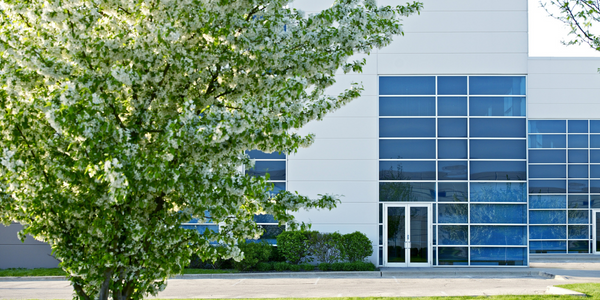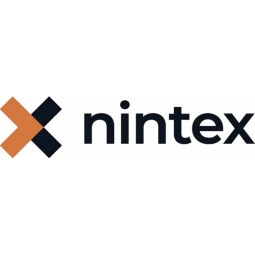技术
- 功能应用 - 企业资源规划系统 (ERP)
- 平台即服务 (PaaS) - 应用开发平台
适用行业
- 水泥
适用功能
- 设施管理
用例
- 过程控制与优化
- 时间敏感网络
服务
- 系统集成
- 培训
关于客户
Zamil Industrial 是市场领先的设备、建筑材料以及创新设计和工程解决方案的领先供应商。该公司总部位于沙特阿拉伯,一直在快速发展。随着公司规模的扩大,其需求变得更加复杂,其遗留系统已不再足够。该公司需要一个全面的自动化解决方案,能够满足其不断增长的数字技术需求,并提供必要的可扩展性和可靠性。
挑战
Zamil Industrial 是市场领先的设备、建筑材料以及创新设计和工程解决方案的领先供应商,其传统业务流程自动化平台面临着重大挑战。该平台最初足以满足公司的需求,但随着组织的扩展和需求变得更加复杂,该平台无法提供必要的可扩展性和可靠性。由于频繁出现需要立即关注的错误和故障,IT 资源承受着持续的压力。遗留系统提供商缺乏足够的支持导致停机时间和业务中断增加,这成为该公司面临的一个严重问题。 Zamil Industrial 迫切需要一个能够满足其不断增长的数字技术需求的工作流程引擎。
解决方案
在咨询了 Microsoft 合作伙伴并筛选了一系列替代供应商后,Zamil Industrial 选择 Nintex K2 Five 作为其企业工作流程解决方案。该集团的大部分业务流程已转移到 Nintex K2 Five,为人事、人力资源、培训、财务、质量控制、设施管理和制造等关键业务领域提供服务。 2015 年,通过 Nintex K2 Five 发起了超过 97,000 个请求,2016 年又发起了 81,000 个请求。Nintex K2 Five 提供了一个灵活的业务流程自动化平台,可以扩展以满足业务需求。它还通过显着减少构建和部署流程应用程序所需的时间来提高 IT 部门的效率。支持整个集团所有用户所需的工作量也大幅减少了 80%。
运营影响
数量效益

Case Study missing?
Start adding your own!
Register with your work email and create a new case study profile for your business.
相关案例.

Case Study
System 800xA at Indian Cement Plants
Chettinad Cement recognized that further efficiencies could be achieved in its cement manufacturing process. It looked to investing in comprehensive operational and control technologies to manage and derive productivity and energy efficiency gains from the assets on Line 2, their second plant in India.

Case Study
Digital Transformation of Atlanta Grout & Tile: An IoT Case Study
Atlanta Grout & Tile, a Tile, Stone & Grout restoration company based in Woodstock, Georgia, was facing challenges with its traditional business model. Despite steady growth over the years, the company was falling behind the web revolution and missing out on the opportunity to tap into a new consumer base. They were using independent software from different vendors for each of their department information and workforce management. This resulted in a lot of manual work on excel and the need to export/import data between different systems. This not only increased overhead costs but also slowed down their response to clients. The company also had to prepare numerous reports manually and lacked access to customer trends for effective business decision-making.

Case Study
Revolutionizing Construction Equipment Rental: A Case Study on ProsRent and ENO8
ProsRent, a startup that won the 'Best Financial Opportunity' and 'Best Pitch' at CodeLaunch 2016, aimed to revolutionize the way construction professionals source and rent heavy equipment. In the construction industry, project managers and contractors typically rent heavy equipment from supply companies. However, predicting inventory can be challenging, and finding the required equipment at the right time and place can be a hassle. If the preferred vendor doesn't have the required equipment, it results in wasted time and money in searching for it, often leading to higher costs due to non-preferred rates and increased delivery costs if the vendor is located far from the job site. Suppliers, on the other hand, desired access to a wider base of trusted renters that they didn't have to vet themselves and wanted to offer dynamic rental pricing based on demand and availability in their market. ProsRent's challenge was to produce a minimum viable product that was fast and first to market but also strong enough to engender loyalty and repeat business from the target market.

Case Study
AI-based Automation for Commercial Office HVAC: A Verdigris Case Study
Modern buildings are required to run longer hours, support a variety of end uses, and contribute to higher levels of economic productivity, leaving a thin margin for error. However, even the most advanced building and environmental control systems have failed to adequately support facilities and operations management. Buildings are often inefficient and the people using them are underserved. To meet occupant comfort and maintain cost and energy efficiency, a dynamic, AI-assisted approach is needed.

Case Study
Revamping EE's Legacy ERP: A Case Study on BT's Strategic Transformation
EE, even after its merger with BT, was operating its ERP estate on legacy infrastructure, hosted on the premises of a third-party supplier. This outdated system resulted in a volume-based operational model, higher time to market, longer delivery cycles, and unsatisfactory customer experience. BT recognized the need for a strategic transformation of these aging ERP systems and sought a partner who could proactively manage application services. The partner was also expected to handle development requirements associated with application management services, drive accountability, and ownership with a time and target-driven transformation of these services. BT's primary goals were to improve customer experience, reduce cycle time, and measure these improvements with precision.








